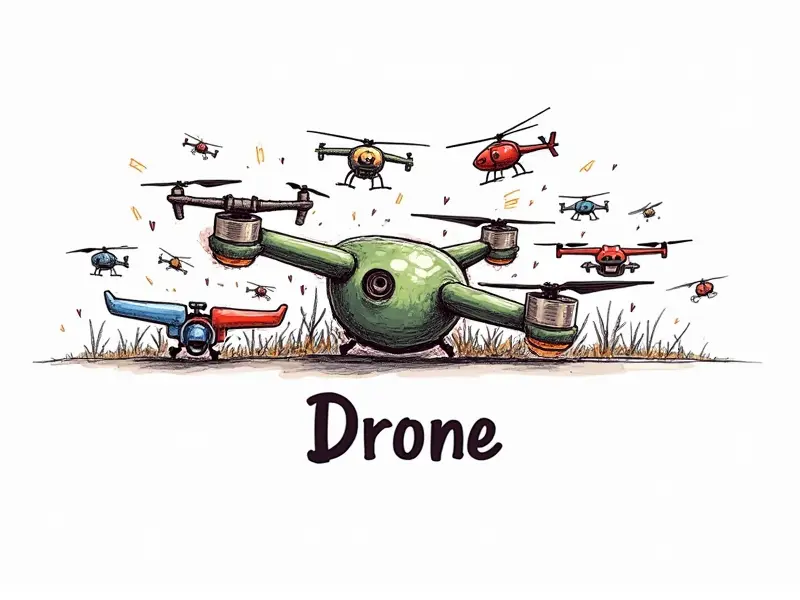Drone RC transmitter basics

Understanding Drone Transmitter Controls
When you're new to the world of drones, understanding how your remote control (RC) transmitter works is crucial. The controls on an RC transmitter are designed to give you precise and responsive control over your drone's movements. Typically, a standard RC transmitter will have four main sticks: one for pitch and roll (left stick), and another for throttle and yaw (right stick). Additionally, there are often several buttons and switches that allow you to perform specific functions such as taking off, landing, or switching between flight modes.
Choosing the Right RC Transmitter
Selecting the right RC transmitter is a critical step in ensuring your drone operates smoothly. Factors like range, durability, and compatibility with your drone model are essential considerations. For beginners, it's often best to start with a basic transmitter that offers straightforward controls and reliable performance. As you gain experience, you might opt for more advanced models with features such as telemetry data display or programmable switches.
Essential Features of RC Transmitters
- Range: The distance at which your transmitter can communicate with the drone is crucial. Look for transmitters that offer a range of at least 1-2 kilometers, depending on your needs.
- Battery Life: A long-lasting battery ensures you don't have to worry about running out of power during critical moments.
- Durable Build: Transmitters that are built to withstand rough handling and environmental conditions will serve you better in the long run.
- Compatibility: Ensure your transmitter is compatible with your drone model, especially if it uses a specific protocol like DSMX or Spektrum.
Mastering Drone Radio Controls Basics
Mastery of radio controls involves understanding the nuances of each stick and button. The left stick typically controls pitch (forward/backward movement) and roll (side-to-side movement). The right stick manages throttle (up/down movement) and yaw (rotation around the vertical axis). Familiarize yourself with these basics to achieve smooth, controlled flight.
Beginner's Guide to RC Transmitter Setup
Setting up your RC transmitter for the first time can be daunting. Start by pairing your transmitter with your drone according to the manufacturer’s instructions. This usually involves placing both devices in a specific mode and pressing designated buttons or switches until they synchronize. Once paired, you may need to adjust settings such as flight modes, failsafe options, and telemetry data.
Optimal Range for RC Transmitters Explained
The optimal range of an RC transmitter depends on the environment and your specific needs. In open fields with no obstructions, a range of 1-2 kilometers is ideal. However, in urban areas or near tall buildings, this range can be significantly reduced due to interference from other electronic devices.
Key Buttons on Your Drone TX Explained
Your RC transmitter will have several buttons and switches that serve various functions:
- Mode Switches: These allow you to switch between different flight modes such as beginner, advanced, or acrobatic.
- Failsafe Button: This button activates the failsafe function, which ensures your drone returns home safely if communication is lost.
- Data Link Buttons: These buttons are used to toggle telemetry data and other important flight information.
Synching RC Transmitter with Drone Easily
To sync your transmitter with your drone, follow these steps:
- Place both the transmitter and drone in pairing mode as specified by the manufacturer.
- Press the designated buttons or switches on both devices simultaneously until they synchronize.
- Verify that the synchronization is successful by checking for visual or audio confirmation from your equipment.
Battery Life Tips for RC Transmitters
Maintaining a long battery life in your transmitter is crucial. Here are some tips:
- Use High-Quality Batteries: Invest in high-capacity, rechargeable batteries to ensure extended use.
- Charge Regularly: Keep your batteries charged and ready for use before each flight session.
- Monitor Battery Levels: Always check the battery level indicator on your transmitter before flying.
Advanced RC Transmitter Settings Explained
For more experienced users, advanced settings can enhance control and performance. These include:
- Tuning Parameters: Adjusting parameters like gain, expo, and travel to fine-tune your controls.
- Custom Profiles: Creating custom profiles for different flight modes or conditions.
Common RC Transmitter Troubleshooting
If you encounter issues with your transmitter, here are some common troubleshooting steps:
- Battery Issues: Check if the battery is fully charged and properly connected.
- Synchronization Problems: Ensure both devices are in pairing mode and follow the synchronization process carefully.
- Interference: Move away from sources of interference such as other electronic devices or buildings.
Conclusion
Mastery of your RC transmitter is key to achieving smooth, controlled flights with your drone. By understanding the controls, choosing the right equipment, and setting up your transmitter correctly, you can ensure a positive flying experience. Additionally, maintaining optimal range, familiarizing yourself with essential features, and troubleshooting common issues will help you get the most out of your drone.

